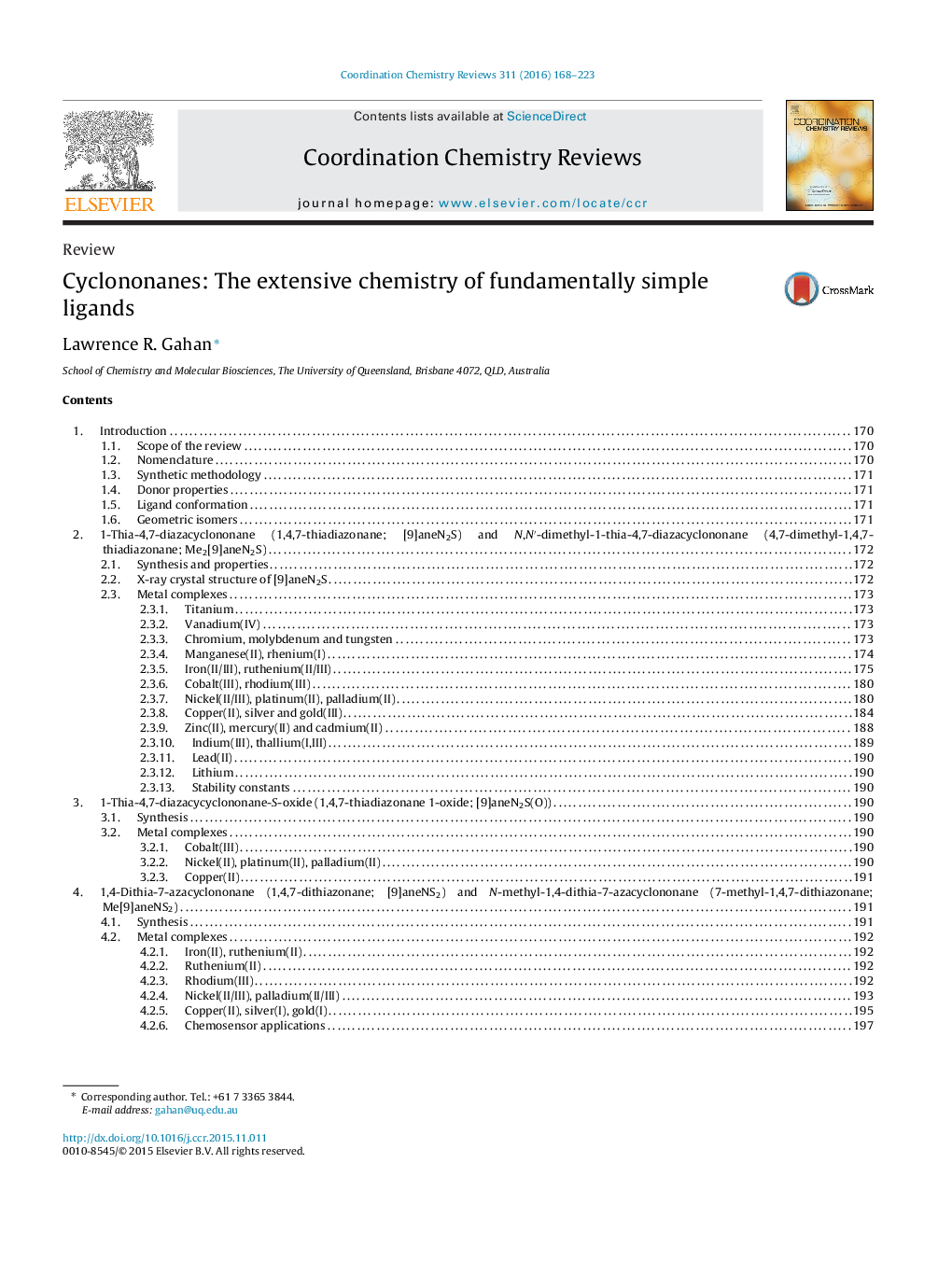| Article ID | Journal | Published Year | Pages | File Type |
|---|---|---|---|---|
| 1299275 | Coordination Chemistry Reviews | 2016 | 56 Pages |
•Review of current trends in cyclononane chemistry.•Diversity of donor groups and transition metal chemistry complexes which arise.•Significant new synthetic chemistry.•Significant advances in the applications of cyclononane ligands.
The cyclononane ligands are fundamental examples of the macrocyclic ligand. With three donor atoms in a nine-membered ring they represent the simplest of the macrocyclic class. However, this simplicity is deceptive, for within this class the variations are extensive and perhaps hitherto unrecognised. As well as the relatively familiar 1,4,7-triaza-([9]aneN3) and 1,4,7-trithia-([9]aneS3) cyclononanes whole families of cyclononane ligands are known with thioether/nitrogen, nitrogen/oxygen, selenium, tellurium as well as phosphorus and arsenic donors. The chemistry of some of these ligands, for example [9]aneN2S, [9]aneNS2 and [9]aneN2O has been reported extensively, and some examples have simply been reported as having been synthesised (for example [9]aneO2S and [9]aneO2Se) with little other information. This review attempts to introduce the extensive chemistry of what are fundamentally the simplest examples of macrocyclic ligands.
Graphical abstractFigure optionsDownload full-size imageDownload high-quality image (132 K)Download as PowerPoint slide
